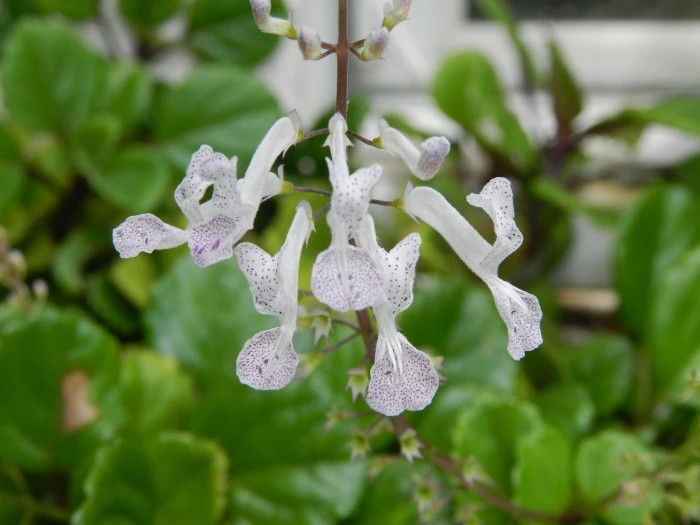Swedish Ivy
(Plectranthus verticillatus)
Swedish Ivy (Plectranthus verticillatus)
/
/

SergioTorresC
CC BY-SA 3.0
Image By:
SergioTorresC
Recorded By:
Copyright:
CC BY-SA 3.0
Copyright Notice:
Photo by: SergioTorresC | License Type: CC BY-SA 3.0 | License URL: https://creativecommons.org/licenses/by-sa/3.0 | Uploader: SergioTorresC | Publisher: Wikimedia Commons | Title: Plectranthus_verticillatus_3.JPG | Notes: {{Information |Description= Location: Cinnamon Bay, St. John, US Virgin Islands More information: [http://edis.ifas.ufl.edu/ST490 University of Florida extension] |Source=[http://www.flickr.com/photos/55257385@N00/2709449426/ Plumeria Alba, Wild Frangip






























Estimated Native Range
Climate Requirements for Maricopa, Arizona
| This Plant | Your Site | Plant Suitability for Your Location | ||
|---|---|---|---|---|
| • Precipitation | 12" - 129" | 8" | Your precipitation may be insufficient for this plant. Irrigate N" / year. | Irrigate N" / year |
| • High Temp. | 66°F - 95°F | 104°F | Your summers may be too hot for this plant. | Too hot |
| • Low Temp. | 22°F - 68°F | 37°F | Your winter temperatures are normal for this plant | Excellent |
This plant should grow well at your location with about N inches per year (Y minutes per month) of irrigation.
Summary
Plectranthus verticillatus, commonly known as Swedish Ivy, is an evergreen perennial herb native to shaded forest floors and riverbanks in the Eastern Cape of South Africa. It typically grows between 10 and 30 cm in height and spreads to about 60 cm. Swedish Ivy has aromatic, glossy green leaves with scalloped edges and sometimes displays a deep purple hue at the center, on the stems, and on the underside of the leaves. It produces small, tubular purple and white flowers that are not particularly showy but add a delicate contrast to the foliage in spring, summer, and fall.
Swedish Ivy is valued for its fast growth and ease of maintenance, making it a popular choice for indoor hanging baskets. It thrives in indirect sunlight and can be used as a lush ground cover in frost-free climates. While it prefers to stay moist, it is important to avoid waterlogging. Regular pruning encourages bushier growth and prevents legginess. Propagation is straightforward through stem cuttings. Although generally pest-resistant, weak plants may attract spider mites. In cultivation, it does best in partial shade to full sun, with moderate water requirements, and in well-draining soil. It is not known for being invasive but should be monitored to prevent unwanted spread.CC BY-SA 4.0
Swedish Ivy is valued for its fast growth and ease of maintenance, making it a popular choice for indoor hanging baskets. It thrives in indirect sunlight and can be used as a lush ground cover in frost-free climates. While it prefers to stay moist, it is important to avoid waterlogging. Regular pruning encourages bushier growth and prevents legginess. Propagation is straightforward through stem cuttings. Although generally pest-resistant, weak plants may attract spider mites. In cultivation, it does best in partial shade to full sun, with moderate water requirements, and in well-draining soil. It is not known for being invasive but should be monitored to prevent unwanted spread.CC BY-SA 4.0
Plant Description
- Plant Type: Herb
- Height: 2-3 feet
- Width: 2-3 feet
- Growth Rate: Moderate
- Flower Color: Purple, White
- Flowering Season: Spring, Summer, Fall
- Leaf Retention: Evergreen
Growth Requirements
- Sun: Full Sun, Part Shade
- Water: Medium, High
- Drainage: Medium
Common Uses
Bee Garden, Bird Garden, Butterfly Garden, Deer Resistant, Drought Tolerant, Fragrant, Groundcover, Hummingbird Garden, Low Maintenance, Potted Plant, Street Planting
Natural Habitat
Native to shaded forest floors and riverbanks in the Eastern Cape of South Africa
Other Names
Common Names: Swedish Begonia, Whorled Plectranthus
Scientific Names: Plectranthus verticillatus, Plectranthus nummularius, Plectranthus thunbergii, Ocimum racemosum, Ocimum verticillatum
GBIF Accepted Name: Plectranthus verticillatus (L.f.) Druce